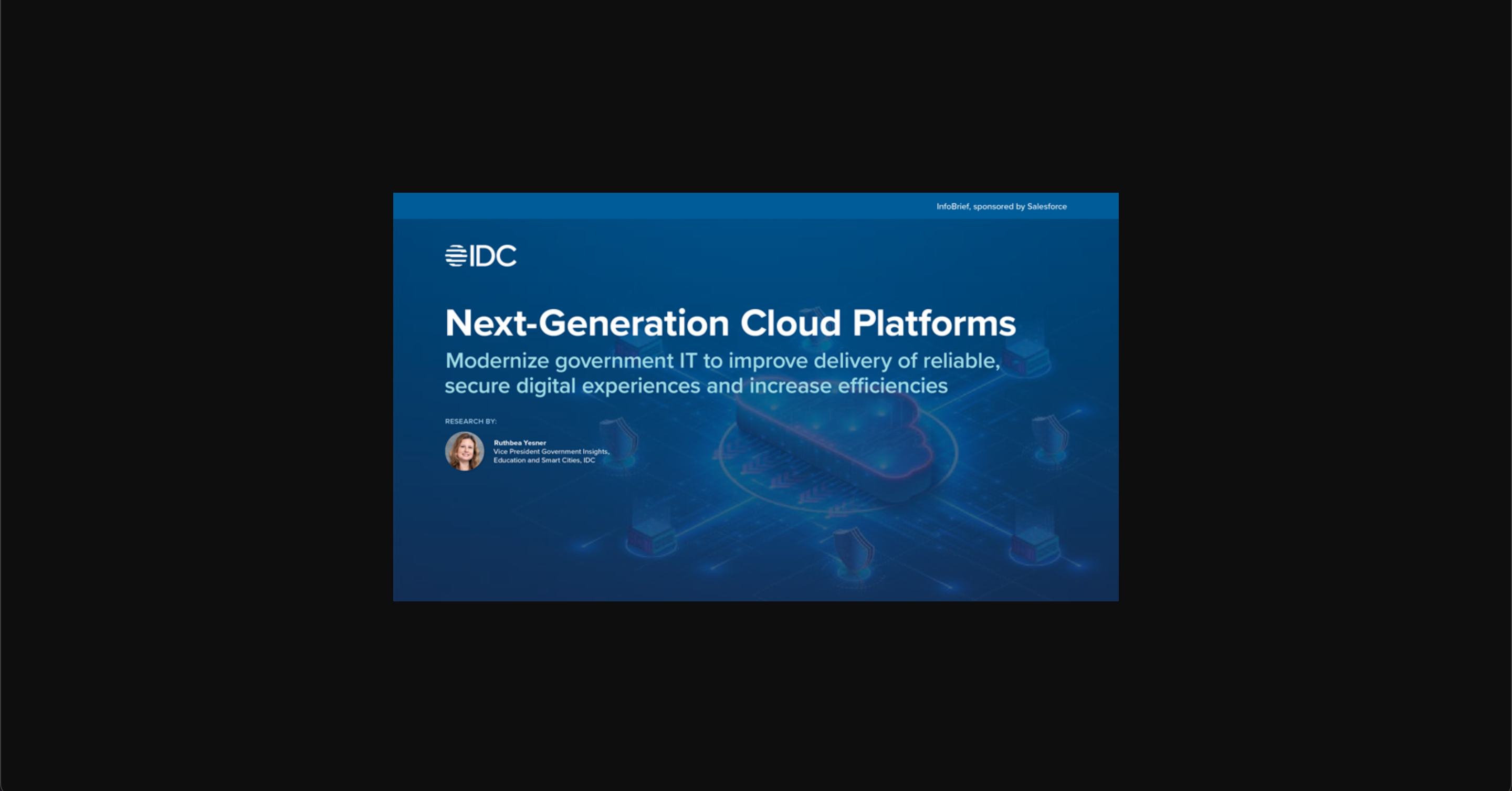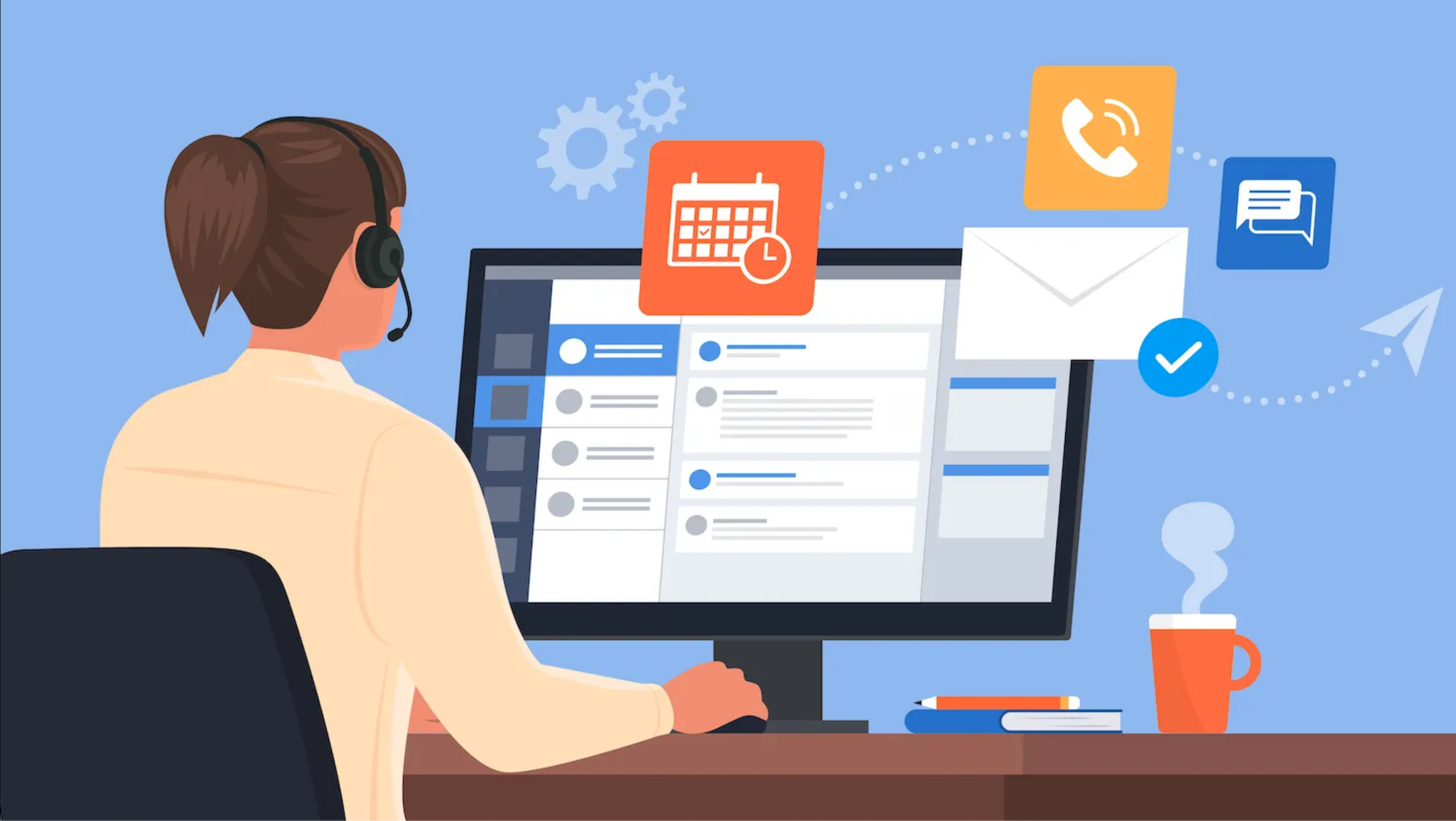Customer Snapshot
The CA Department of Motor Vehicles scales service, drives innovation.
See how automating workflows & replatforming infrastructure helps teams serve more people faster.
The California Department of Motor Vehicles (CA DMV) is the largest identity issuer in the nation, managing identities for more than 34 million people services across 175+ field offices and 300+ kiosks across the state. It is also setting the example for how any department or agency can:
- Deliver new or existing services with speed and at scale
- Repurpose application designs or templates from one program to the next
- Connect it all on one platform so that the way data is collected and actioned reflects the customer’s experience – not internal processes and operations
When the director introduced a “digital first” initiative across all of the DMV’s services, with the goal of becoming the best retail organization in the country, the team took it one step further. “We set course for a journey to integrate our service channels and create an omni-channel experience for our customers, because that’s the reality of how they engage. And to do that at the speed and scale of the CA DMV we needed a modern technology foundation in place that could support this work,” said Ajay Gupta, Chief Digital Transformation Officer for the CA DMV. “Here is where that digital transformation journey has brought us.”
Learn more
“With Salesforce, we can take personalization to new heights. It helps us create stronger connections and richer experiences."
CA DMV transforms the front to the back office on the cloud.
Gupta and team have taken the task of modernizing its legacy core systems to the FedRAMP-authorized Salesforce Customer 360 for Public Sector. This gives the team the ability to support more services, as well as some new, innovative services, across more channels, transforming the DMV from the front to the back office all on one platform:
Digital eXperience Platform (DXP)
Built on Experience Cloud, Public Sector Solutions, and MuleSoft, DXP is the new core system that is enabling agile implementation in parallel to an iterative deployment process. The team is using this to introduce intelligent document processing via integrations with AI/ML and robotics, decision augmentation and automation, and configurable applications that support.
Contact Center
Customers can visit dmv.ca.gov, a portal environment built on Experience Cloud. If the individual has a question they cannot answer through the website content, AI-driven chat bots serves up answers to FAQs and connects them to a live agent for additional help. These actions and activities are then captured in a personalized profile record in Service Cloud via the Salesforce Computer-Telephony Integration (CTI) with the IVR, creating a 360-degree of that Californian. An integration with the language translations services within the live chat.
Virtual Field Office
If the customer’s question is too complex for chat or too real-time for email and needs to move to a phone or video call, Salesforce Scheduler automatically moves the customer from the contact center to the virtual field office based on escalation criteria and workflow rules.
“We let the customer start interacting with us virtually and get them as far as possible using automated workflows. In the meantime, we also put them into a virtual queue so that if they get to the end or still have to go into a physical office, they can pick up where they left off instead of standing in line and starting over,” said Gupta.
Mobile Driver’s License Pilot
Customers can download the DMV mobile wallet app to their smartphone, where they are then prompted to verify their presence and their driver’s license. MuleSoft then carries that data through to the DMV’s system of record, built on Service Cloud and AWS to perform identity checks, digital signatures and provisioning of the mobile license as a digital credential. The architecture is able to support multiple open source and native wallet platform via an elastic and scalable architecture.
The CA DMV also added Shield and Tableau and CRM Analytics. These give the team an additional layer of security for all of its data, and a set of integrated reports and dashboards they use to spot trends or pinpoint events that might impact service delivery timelines.
What separates any ordinary project from a true digital transformation?
“Going with SaaS was a strategic move on our part. It gave us the ability to reuse designs across multiple programs, and then connect them all on one platform supported by the same code. Using building blocks provided by SaaS platform, the marketplace and cloud native services, we incrementally modernized the Occupational Licensing program, Disabled Placard Program, Employer Pull Notice, and Requestor Access Program. We are now implementing more complex Investigations, Driver Safety and Vehicle Registration programs, and will apply those learnings to the Driver Licensing modernization up next,” said Gupta.
Read more about this and other key takeaways in the CA DMV’s best practices checklist.
This strategy sets new standards that go beyond the DMV.
The DMV team has seen several outcomes as a result of this transformation:
- 60 million transactions processed annually without sacrificing speed and the amount of time it takes to apply for a REAL ID, for example, dropped from 35 to 7 minutes. With more transactions shifting to cheaper and faster channels (click vs call vs brick), the quality of service across the channels and products has improved noticeably.
- An estimated 55 percent of the calls were solved via automated workflows, before staff ever had to get involved. Because the team has more data standardized and consolidated on one platform, they can make more data-driven decisions. “Sometimes we have found that we don’t even need that particular touchpoint. Other times we’ve found that we’ve been able to deflect escalated cases because we’ve solved the issue before it ever required a human touch,” Gupta continued.
- Less time spent waiting in line, less paperwork to be filled out and processed, and less repeating the same question to one rep after the next, makes for happier customers. Happier customers make for happier employees, who then are more likely deliver a better customer experience to the next person they are asked to help. “It’s no longer about the customer experience or the employee experience. Our culture now is about the human experience,” said Gupta.
“We recently did a Gartner benchmarking exercise, and we were actually ahead of some major industries,” said Gupta. “The example we are setting is one that we hope shows other departments and agencies that you can break siloes, deliver creative services, and change the image people have of the public sector as an industry.”
Ready to build a single view of your customer?
Share Story
Products Used
More Resources

Blog
3 Ways Better Technology Can Transform Government

Datasheet
Purpose-built solutions for Government

Guided tour
Saleforce Public Sector Solutions





